This is part 3 of my “Uganda-The Pearl of Africa” series, the part where we go gorilla trekking at Bwindi Impenetrable National Park. Read about our time in Entebbe, Uganda here, and our visit to Lake Bunyonyi here. Check our photos from our trip here.
Pre-Trip Planning for Gorilla Trekking at Bwindi Impenetrable National Park
Vaccines and Visas
At the time of writing, the US Department of State strongly recommends applying for an e-visa ahead of time, and you can do that here. A Yellow Fever vaccination is required, which can be difficult to find and expensive, so take care of this well in advance of your trip. A Polio vaccine is required for kids under age 5, and recommended for everyone.
The CDC recommends the following vaccines, many of which are standard in the US and you probably already have: yellow fever, hepatitis A, hepatitis B, typhoid, rabies, meningitis, polio, measles, mumps and rubella (MMR), Tdap (tetanus, diphtheria and pertussis), chickenpox, shingles, pneumonia and influenza. We did not get rabies shots for this trip, and I’m not sure they are needed, but it depends on your risk tolerance and what you are planning to do. The shots are super expensive… we did end up getting them for our cave trip in Vietnam.
Malaria prophylaxis is strongly recommended for travel to Uganda. Check with your physician or local travel clinic to determine which medication is best for you.
Gorilla Trekking Options
You can do a gorilla trek any time of the year, but the best times to go are June, July, August, September, and December. October was just fine for us! Uganda and Rwanda are the most popular countries in which to do this, as the Democratic Republic of the Congo is largely considered unsafe because of civil unrest and the risk of violet crime and kidnapping. However, Congo is good because it is cheaper and you can see the Mountain Gorillas and the Lowland Gorillas.
At the time of writing, a gorilla trekking permit for Congo costs $400, Uganda costs $700, and Rwanda costs $1500. Uganda offers an alternative experience, which I hear is very special- gorilla habituation. This costs around $1500. So, for $700, you can hike out and find the gorillas, spend an hour or so with them, and come back. We chose gorilla trekking at Bwindi Impenetrable National Park in Uganda, and it was amazing!
For $1500, you get to spend the entire day with a family of gorillas. This experience is limited to 4 tourists per group, and you can assist in getting the animals used to being in the company of humans.
Bwindi Impenetrable National Park
The Drive to Bwindi
Bwindi Impenetrable Park is about a 5 hour drive from Lake Bunyonyi. The drive took us down bumpy, red dirt roads, through numerous villages, and into the mountains. Two kids along the way had chameleons, and we gave them a football and some protein bars in exchange for photographs. There were so many banana plantations! As I mentioned before, Uganda is one of the largest producers of bananas in the world, but one of the smallest exporters because Ugandans love bananas! They consume an average of 1.5 pounds per person per day!
We saw tea plantations and farms with goats and cows. Uganda is a very agricultural country, limited only by infrastructure and standards compliance- not by resources for sure! Uganda produces a wide range of agricultural products including: coffee, tea, sugar, livestock, fish, edible oils, cotton, tobacco, plantains, corn, beans, cassava, sweet potatoes, millet, sorghum, and groundnuts.
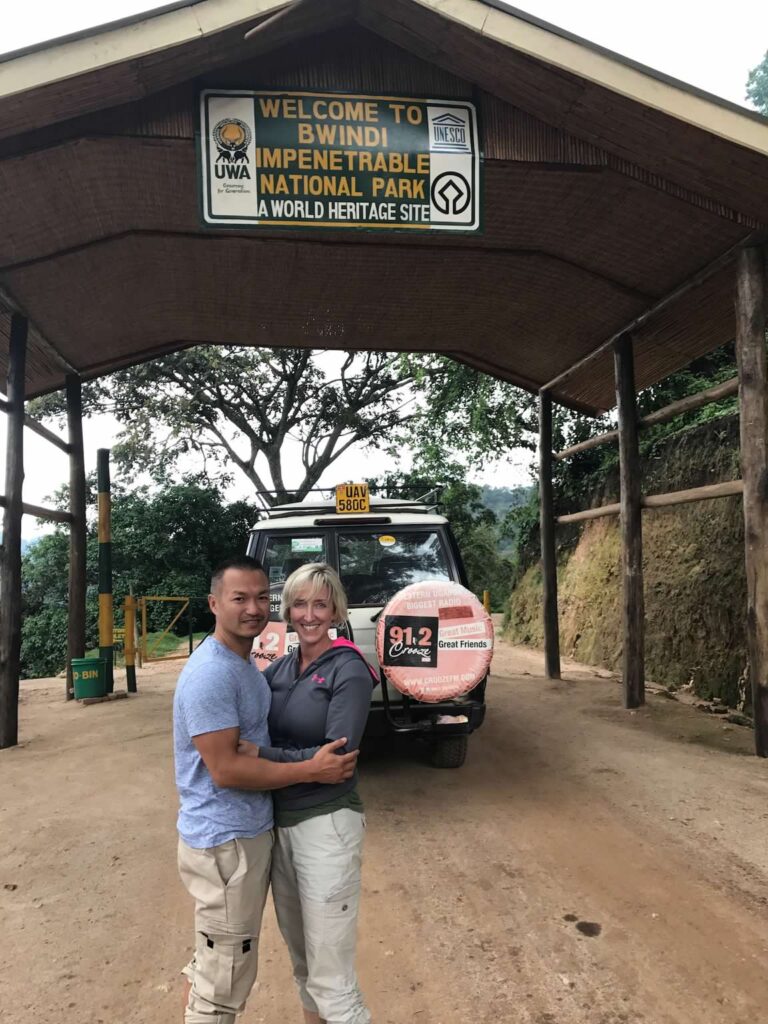
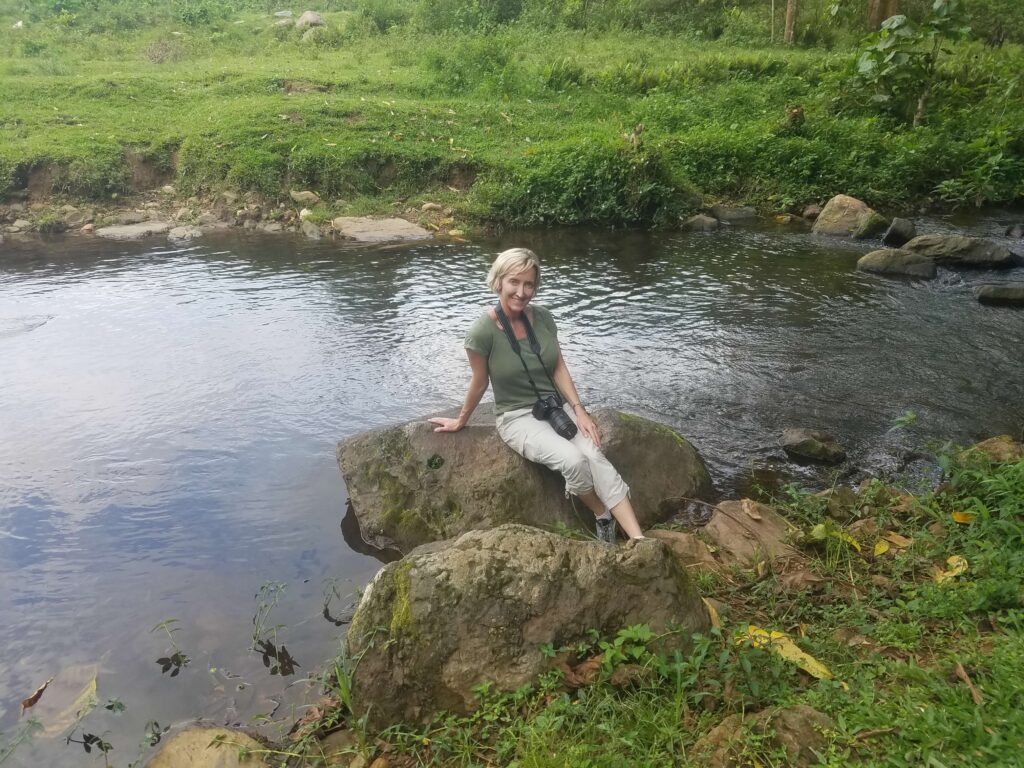

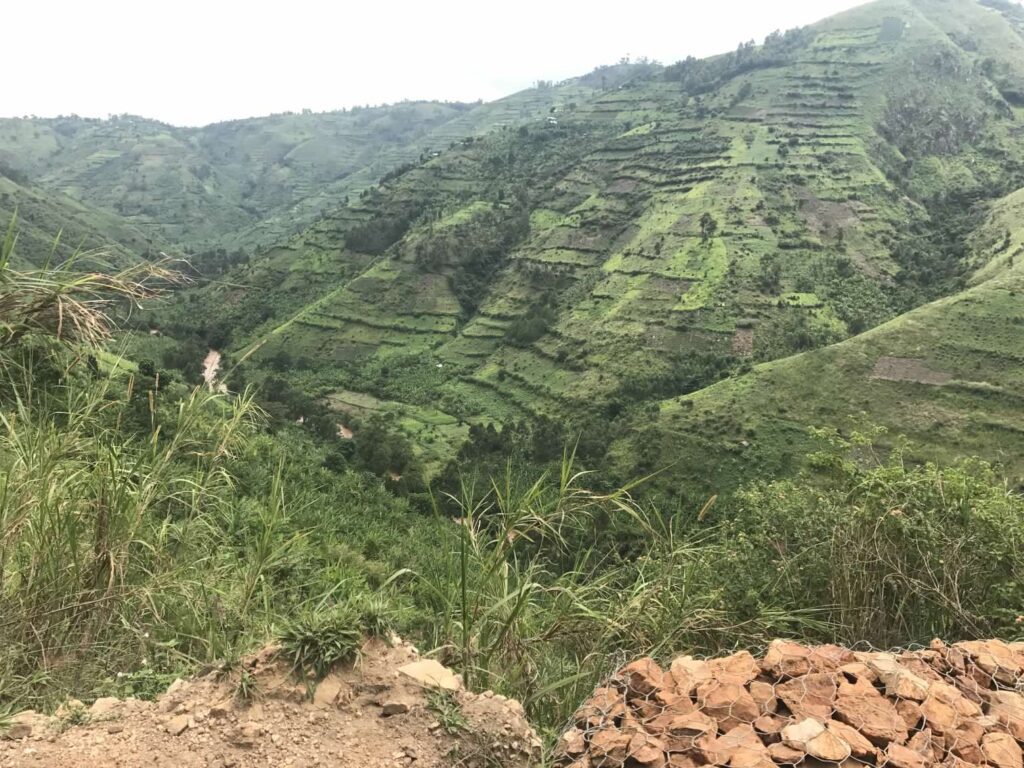

Bwindi
Much of the land in Uganda remains wild and uncultivated, providing ample habitat for wildlife to roam free. This also adds to the mystery and allure of the country. Bwindi Impenetrable National Park in Southwestern Uganda is one of the only two places where African mountain gorillas remain. The other is the Virunga Mountains, which span the borders between the Democratic Republic of Congo, Uganda, and Rwanda.
The Place of Darkness
Bwindi is a Ugandan word that means “place of darkness,” and the forest is so named because of the thick vegetation of bamboo, ferns, and other plants that blanket the area. Just the name invokes a sense of excitement and adventure. The Bwindi Impenetrable National Park is part of the Bwindi Impenetrable Forest, an UNESCO World Heritage Site and one of the most biologically diverse places on earth. The park was established to protect the gorillas, but its establishment took away the traditional hunting grounds of the Batwa people, an indigenous pygmy tribe that has experienced ongoing systemic discrimination in Uganda.
Aside from the red clay roads, the only discernible color was green. With that said, there were hundreds of shades of green! The forest was thick, lush, and mysterious, with its umbrella trees, ferns, banana trees, mahogany trees… there are over 220 species of trees and 100 species of ferns here! The forest is thought to be 25,000 years old and contains plant species from the plains and the mountains. For you budding botanists out there, you can get “into the weeds” and learn more about the vegetation of Bwindi here. Bamboo was prevalent, which lent a soft, fuzzy appearance to some areas. Mist settled in the valleys which only compounded the surreal appearance.
There were hills and valleys coated in green as far as the eye could see, and I was wowed around every switchback!
Mahogany Springs
You can stay in or near Bwindi for as little as $20 per night, or as much as $600 per night (apparently if you have unlimited funds, you can pay up to $2500 a night!!!). $20 will get you a tent or a basic room, and for $600 you can get a villa in a resort with a lazy river. Check out the full range of lodging options here. Many of the camps/resorts will arrange excursions for you on the days you are not gorilla trekking.
We opted for a mid-range option, Mahogany Springs, and it was magical. It is the perfect place to stay when gorilla trekking at Bwindi Impenetrable National Park!
We had a private villa with a balcony and a view of the river and the mountains. The room contained a king sized bed surrounded by mosquito netting, a dresser, and a desk. The ceiling was covered in banana leaves, the walls were stucco, and the floors wood and tile. The bathroom was large and luxurious.
We could hear the river from our balcony, and the mountains beckoned, so we went out exploring. A series of signs led us to the river, where we encountered a group of children sitting on the grass with their drawings of gorillas spread out in front of them. We bought a couple for some pocket change. What a great souvenir!
Gorilla Trekking at Bwindi Impenetrable National Park
After a nice breakfast at the resort, our driver picked us up around 7:30 am. Our group consisted of 6 other tourists, 2 porters, 2 trackers, and 1 ranger. One of the trackers carried a rifle… just in case. He would fire at the sky if we were threatened, hoping to scare away whatever animal was threatening us…
The Rushegura Troop
There are four gorilla families, known as troops, in Bwindi: Ruhija, Buhoma, Nkuringo, and Rushegura. We set out to find the Rushegura troop. This troop consists of 19 individuals: 1 silverback, 2 blackbacks, 5 females, and several juveniles and infants.
A young male gorilla is called a “blackback.” As he ages, he develops a silver patch or streak along his back, thus the term “silverback.” The strongest silverback eventually becomes the leader of the group and the principal mating partner for all the ladies in the troop. There are typically several females, who birth and raise the babies.
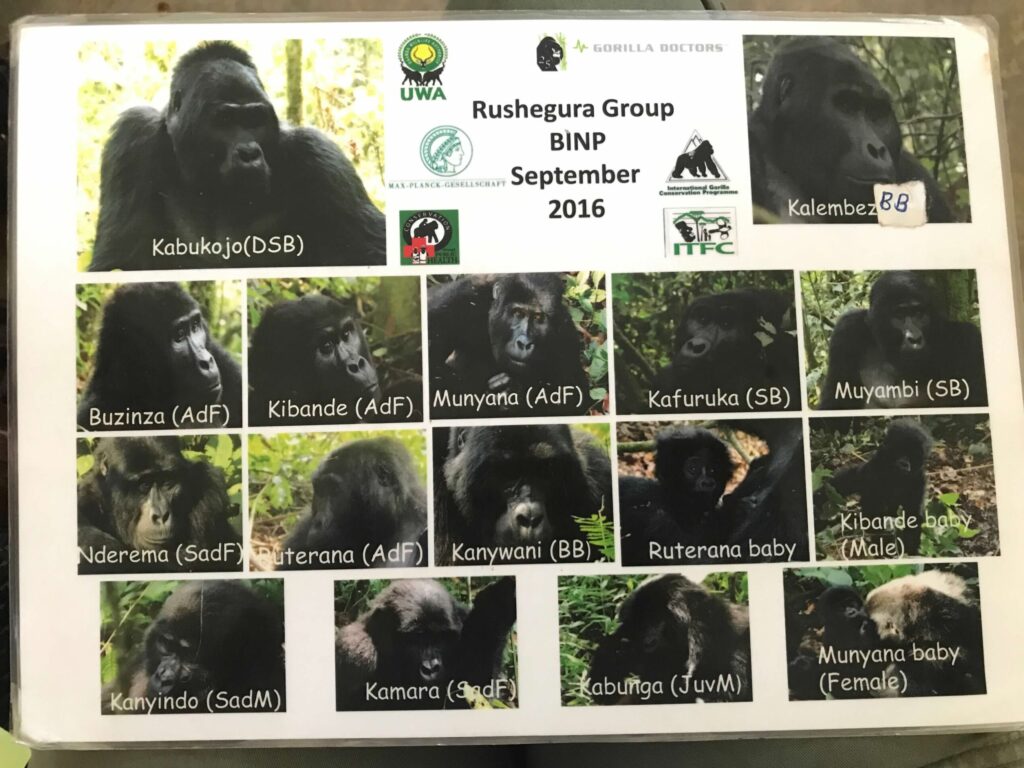

The Trek
We were outfitted in our cliche safari gear, complete with tan boonie hats, cargo pants, and jungle boots. We had walking sticks, but I didn’t need one- my porter, Johnson, was by my side the entire time. He really wanted to hold my hand, so I didn’t argue. It was a pretty easy hike- we followed a nice trail that paralleled the river, observing butterflies, monkeys, and colorful birds. We saw a GIANT millipede. On we walked for… 15 minutes!
Suddenly, we heard a tracker shout that he had found the gorillas. The other tracker and the ranger began hacking away at the vegetation, and we veered off of the path to follow them. It was getting a little hectic! We climbed up hills and between trees, when all of a sudden I looked up and saw a female gorilla with a baby in the tree above us!
Our Time with the Gorillas
We entered the area very quietly, very slowly. We had been instructed to make no sudden movements and, under no circumstances, were we to try and touch the gorillas. If they touched us, we were to be still and quiet and allow them to do their thing.
Suddenly, we were surrounded by gorillas! In the middle of everything, the silverback, Kabukojo, lounged like a Roman Emperor, chewing on bamboo and watching his family with pride. He was not looking at us, but he knew we were there. He rolled over and picked at his toes nonchalantly. At one point, I was between him and one of the females with her baby. The female got so close to me I could smell her, and see the nap of her fur and her soft brown eyes.
Vuong was standing in the clearing when the massive silverback stood up. The silverback walked right behind him, brushing his back as he passed. I’m sure that gave Vuong a thrill!
Family Time!
We were surrounded by these majestic creatures. The silverback and one of the blackbacks wrestled at one point, and the babies climbed and swung around playfully. We heard them grunt and snort as the group moved down the path a bit, and we gingerly followed. They resettled, this time with the blackback lounging near us. The rest of them moved up into the trees. One of the females pooped and farted as she was leaving, and we couldn’t help but giggle.
We must’ve stayed for an hour, snapping photos and just savoring the experience. It was absolutely amazing.
I think we were lucky that our hike was short and easy- the guides warned us that it could be a very difficult hike. We expected to spend hours traipsing through the bush, getting eaten alive by insects and narrowly avoiding being devoured by pythons. Many people had longer, more difficult hikes, which would have been fine and well worth it!
Did you enjoy reading about our experience gorilla trekking at Bwindi Impenetrable National Park? Have you been on a gorilla trek? Is it a bucket list item for you? Comment below and tell us your story! I highly recommend this activity.
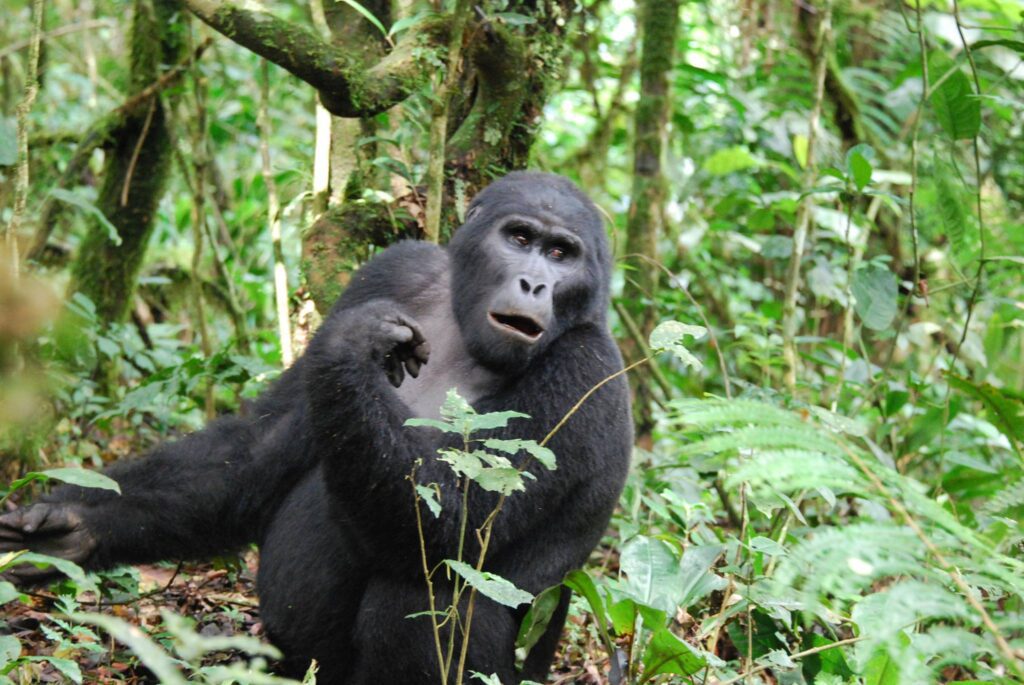

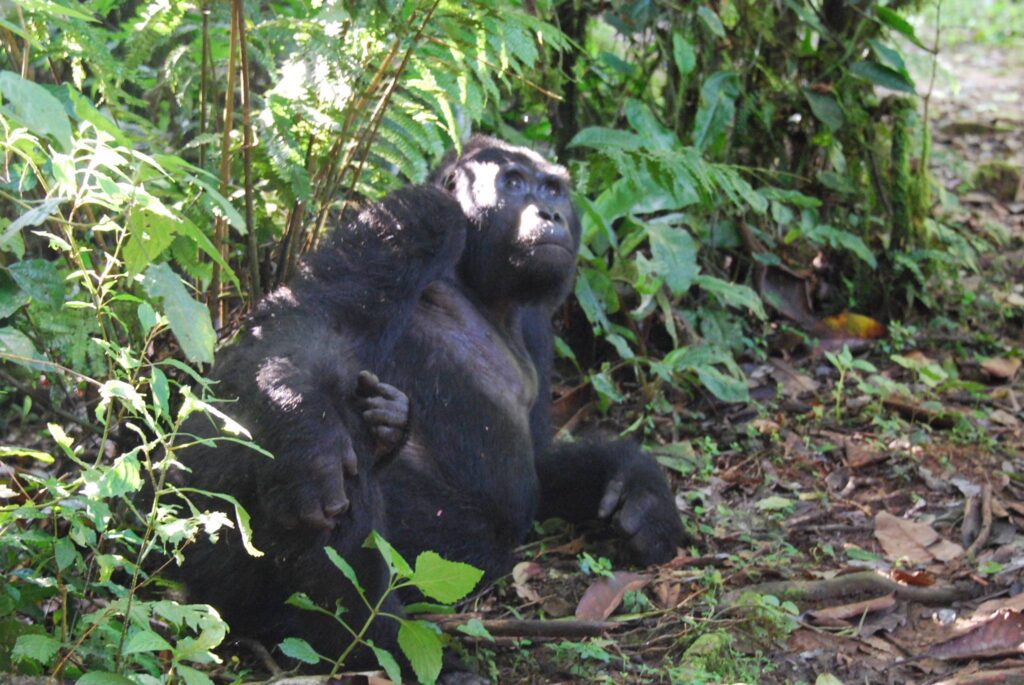

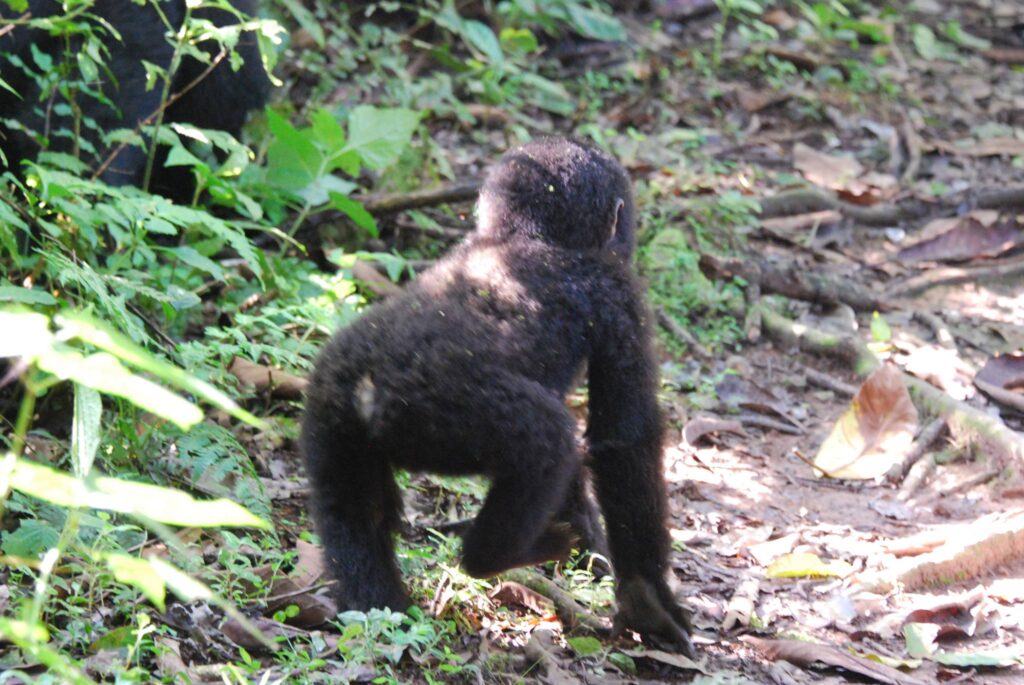

On to Mbarara…
Lucas picked us up and we settled in for the 5-hour drive to Mbarara. Come back next time to read about the incredible experiences we had there, with Dr. Raymond, Ms. Betty, and the rest of the amazing Pathology Department at the Mbarara University of Science and Technology!
